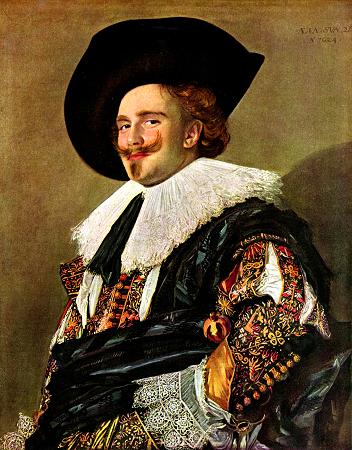The Laughing Cavalier 1624

| Submit your comments on this article |
| -Obits- |
| RIP Mario Traverso, 94, The Last Cavalry Officer |
| 2011-02-20 |
| Traverso was a young lieutenant in the Savoy Cavalry which, in June 1942, was shielding the southern flank of the German summer offensive. The fighting intensified as, approaching the River Don approximately 125 miles north of Stalingrad, the 600 men of the Savoy Cavalry arrived at Isbuschenskij. There, on the evening of August 23, an Italian patrol encountered a Soviet rearguard of 2,000 men supported by mortars and machine-guns. The regiments monocled commanding officer, Count Alessandro Bettoni, winner of two Olympic golds in equestrianism, ordered his men to take defensive positions before settling down to dine off the regimental silver. The following morning, after breakfast, Bettoni gave the order to attack across a plain thick with sunflowers. Officers, wearing red neck ties, slipped on white gloves for the occasion. They wielded captured Cossack swords, which were heavier, and thus more destructive, than Italian sabres. Such was the thirst to take part in what was even then recognised as an unusual event, that Traversos commander rode off to join the four cavalry squadrons, each of 150 men, which formed the main thrust of the attack. Traverso was left in charge of the fifth (machine-gun) squadron, which was the first to advance, laying a thick field of fire from the front and centre of the Italian position directly into two lines of the 812th Siberian Infantry Regiment. Around Traverso, the other Italian squadrons formed up at a walk, before breaking into a trot, canter and finally an all-out gallop. As they set off the battle cry went up: Sabres. To hand. Charge! What followed proved to be a textbook mounted attack. The second squadron broke right, before turning sharply to hammer through the Siberians left flank, and then wheeling around again to press the advantage from behind, hurling hand grenades into the disintegrating enemy line. Bettoni then ordered the fourth squadron to attack head on, and the battle wore down into brutal hand-to-hand fighting, with many of the Savoy having dismounted. At this crucial point the third squadron launched a second diagonal attack, similar to that which had opened the battle, and Soviet resolve crumbled. As the smoke cleared, their losses stood at 150, with a further 500 captured. The Savoy Cavalry had lost fewer than 40 men. You were magnificent, a German officer remarked to the Italians afterwards. We no longer know how to do these things. Mario Traverso is survived by his sister, Alba. As for the Savoy Cavalry, its regimental flag survived the Russian campaign thanks to Traverso, who recovered it from a fallen comrade. Postwar Italy was no place to honour such things, however, and it was only towards the end of his life that he returned it. A delegation from the regiment attended his funeral, where the flag was draped upon the coffin before being taken to a permanent home in the regimental museum. |
| Posted by: Anonymoose |
| #7 I laugh and am joyous with you G(r)omgoro, we learn much on Rantburg. Fill your cup, and toast the passing of Mario Traverso, may he find peace, for the likes of him shall never pass this way again. The Laughing Cavalier 1624  |
| Posted by: Goodluck 2011-02-20 10:37 |
| #6 Goodluck. (a) I was talking about USSF, not italiants. (b) Those who fight on foot are infantry---whether they use horses, APC, or planes (paratropers) for a ride. Those who fight of the back of a horse, or camel, or elephant, or from inside a tank are cavalry. (c) Look up hobelar before you invoke dragoons. (d) The term "gromgoru" comes from a SF book. |
| Posted by: g(r)omgoru 2011-02-20 08:15 |
| #5 g(r)omgoru or grom goru = Gore Mountain Cavalry (from French cavalerie, cf. cheval 'horse') were soldiers or warriors who fought mounted on horseback. Cavalry were historically the third oldest (after infantry and chariotry) and the most mobile of the combat arms. A soldier in the cavalry is known by a number of designations such as cavalryman or trooper. The designation of cavalry was not usually given to any military force that used other animals, such as camels or mules. Infantry who moved on horseback, but dismounted to fight on foot, were known in the 17th and early 18th centuries as dragoons, a class of mounted troops which later evolved into cavalry proper while retaining their historic title. A Victory but nearly 60,000 Italian POWs died in Nazi labour camps, while nearly 20,000 perished in Allied Prisoner of War camps (mainly Russian: 1/4 of the 84,830 Italians officially lost in the Soviet Union were taken prisoners, and most of them never returned home). |
| Posted by: Goodluck 2011-02-20 04:12 |
| #4 They're not cavalry, they're mounted infantry. |
| Posted by: g(r)omgoru 2011-02-20 03:09 |
| #3 Indeed they were. Met by General Rashid Dostum upon arrival. Doug Stanton's book "Horse Soldiers" while taking some liberties, provides a fairly accurate account. |
| Posted by: Besoeker 2011-02-20 01:38 |
| #2 I thought some of our SpecOps were fighting from horse back in the early days of Afghanistan? |
| Posted by: Water Modem 2011-02-20 01:34 |
| #1 This is a re-enactment of an Australian Light Horse attack during WWI. But machine gunners on horseback such as the WWII Savoy Cavalry attack is definitely an interesting concept. |
| Posted by: Snereger Lover of the Swedes3903 2011-02-20 00:54 |